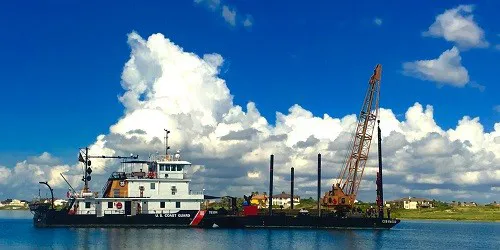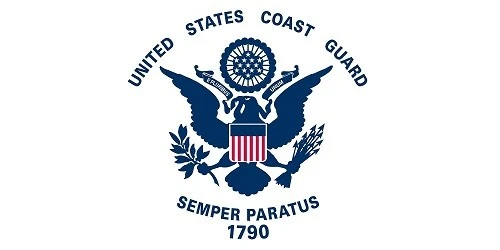-
Cruise Line InformationCarnival Cruise Line Cruising Guide & Tips Alcohol Prices & Selections Unlimited Soda Program Cheers! Beverage Program Deck Plans Dry Dock Schedule Menus Food Recipes Beverage Recipes Secret Decks What's Included? What's Extra?
Norwegian Cruise Line Cruising Guide & Tips Deck Plans What's Included? What's Extra?
Royal Caribbean International Cruising Guide & Tips Food Recipes Beverage Recipes Menus
COVID-19 Cruise Line Bankruptcies -
World's Notable ShipsWorld's Largest Cruise Ships World's Largest Military Ships World's Longest Service Cruise Ships World's Most Recent Cruise Ship Decomms World's Newest Active Cruise Ships World's Oldest Active Cruise Ships World's Oldest Active Military Ships World's Upcoming Cruise Ships COVID-19 Cruise Ship Decommissions
-
Guest RegisterIf you are reading this it means you have not yet registered. Please take a second to REGISTER (it's FREE). You will then be able to enjoy all the features of Cruising Earth.
You should upgrade or use an alternative browser.
CGC Mallet #11 World's Oldest Active Military Ship - Cruising Earth

CGC Mallet - United States Coast Guard
#11 World's Oldest Active Military Ship
CGC Mallet is currently ranked #11 in the list of the World's Oldest Active Military Ships.
11
In Service:
1963
(62 Years of Service)Ship StatisticsTrack CGC Mallet
In Service: January 01, 1963
Gross Tonnage: 125 GT
Length: 75.40 Feet
Beam: 23.00 Feet
Speed: 10.2 knots / 11.7 mph
Complement: NA
CGC Mallet Historical Brief
Introduction
The United States Coast Guard Cutter (USCGC) Mallet (WLIC-75304) is a notable vessel within the U.S. Coast Guard fleet, primarily serving as an inland construction tender. The Mallet has played an important role in maintaining and improving the infrastructure necessary for safe navigation along the United States' inland waterways. This historical brief provides an overview of the Mallet's construction, operational history, and its ongoing contributions to the U.S. Coast Guard's mission.
Construction and Specifications
USCGC Mallet (WLIC-75304) was constructed as part of the Coast Guard's efforts to maintain a fleet capable of performing a variety of crucial maritime tasks, including aids to navigation (ATON) maintenance and repair. The vessel was built by the Avondale Shipyards, Inc., in Westwego, Louisiana, and was launched in 1963.
The Mallet is classified as a "WLIC," which stands for "inland construction tender." This classification indicates its primary mission of maintaining and repairing aids to navigation within inland waterways. The cutter's hull number, 75304, provides additional identification within the Coast Guard's fleet.
The vessel's design is optimized for the inland and coastal operations that define its mission, featuring a shallow draft and a robust hull to navigate rivers, bays, and other confined waters effectively.
Operational History
The primary mission of the USCGC Mallet is to support aids to navigation (ATON) along the inland waterways of the United States. These aids, which include buoys, beacons, and other markers, are essential for ensuring safe and efficient navigation for both commercial and recreational vessels. The Mallet’s work in this area is critical for preventing accidents and facilitating smooth maritime traffic.
Aids to Navigation (ATON)
One of the core responsibilities of the Mallet is the maintenance and repair of navigational aids. This involves tasks such as setting and retrieving buoys, servicing lights and beacons, and ensuring that all navigational markers are functioning correctly. The Mallet's crew performs these tasks using specialized equipment, including cranes and winches, to handle the heavy and often cumbersome ATON structures.
In addition to routine maintenance, the Mallet is also involved in the installation of new aids to navigation. This can include placing new buoys or markers in areas where they are needed due to changes in navigational channels, construction of new maritime facilities, or to address emerging navigational hazards.
Construction and Repair
As an inland construction tender, the Mallet is equipped to perform a variety of construction and repair tasks. This can include building and repairing docks, piers, and other maritime infrastructure. The vessel's shallow draft and powerful engines allow it to operate in tight and shallow waters where larger ships cannot maneuver.
The Mallet's construction and repair capabilities are particularly important in the aftermath of natural disasters, such as hurricanes or floods, which can cause significant damage to maritime infrastructure. The vessel is often called upon to assist in rebuilding efforts, helping to restore critical navigation aids and facilities that are essential for safe maritime operations.
Training and Readiness
Beyond its operational duties, the Mallet serves as a training platform for Coast Guard personnel. The vessel provides hands-on training opportunities for crew members, helping them develop the skills necessary for ATON maintenance, construction, and repair tasks. This training is essential for ensuring that the Coast Guard can continue to fulfill its mission effectively.
The Mallet's crew undergoes regular training exercises to maintain their proficiency in navigation, engineering, and deck operations. These exercises help to ensure that the vessel is always ready to respond to any situation that may arise, whether it is routine maintenance work or an emergency repair operation.
Cultural and Community Significance
The USCGC Mallet also plays an important role in the communities it serves. The vessel often participates in public outreach events, such as open houses and maritime festivals, where it serves as a tangible representation of the Coast Guard's mission and values. These events provide an opportunity for the public to learn more about the work of the Coast Guard and the importance of aids to navigation.
The Mallet's presence in local communities helps to foster goodwill and build relationships between the Coast Guard and the public. This is particularly important in regions where maritime activities are a significant part of the local economy and culture.
Legacy and Impact
While the USCGC Mallet may not have the same level of fame as some of the larger or more storied ships in the Coast Guard fleet, its contributions are significant. The vessel plays a crucial role in maintaining the infrastructure that supports safe and efficient navigation along the United States' inland waterways. This work is essential for preventing accidents, facilitating maritime commerce, and ensuring the safety of all who navigate these waters.
The Mallet's impact can be measured not just in the direct support it provides to navigation, but also in the way it contributes to the overall mission of the Coast Guard. Inland construction tenders like the Mallet are essential for the daily operations of the Coast Guard, supporting larger missions by ensuring that the necessary infrastructure is in place and functioning correctly.
Decommissioning and Aftermath
As with all military vessels, the USCGC Mallet will eventually be decommissioned as part of the natural lifecycle of the fleet. When this time comes, the vessel will be carefully inspected and an official ceremony will be held to recognize its service. Decommissioned ships can be repurposed for various uses, such as museum pieces, training platforms, or even artificial reefs, depending on their condition and historical significance.
Conclusion
The USCGC Mallet (WLIC-75304) is a vital asset to the United States Coast Guard, performing essential duties as an inland construction tender. Its roles in maintaining and repairing aids to navigation, as well as performing construction and repair tasks, are critical to the safe and efficient operation of the nation's inland waterways. Through its service, the Mallet has contributed significantly to the overall mission of the Coast Guard, ensuring that the necessary infrastructure is in place to support maritime activities.
The vessel also serves as a training platform, helping Coast Guard personnel develop the skills necessary for their roles. The Mallet's legacy is one of reliability, service, and dedication to the principles of the Coast Guard. Its story is a testament to the importance of every component of the Coast Guard fleet, from the largest cutters to the smallest tenders.
The USCGC Mallet exemplifies the spirit of the Coast Guard—always ready to perform its duties, support larger missions, and ensure the safety and efficiency of maritime operations. Its history and ongoing contributions highlight the critical role that inland construction tenders play in the everyday operations of the Coast Guard, maintaining the lifeblood of maritime activity and ensuring that waterways remain operational and secure.
Cruising Earth Website Updates
The cruising industry is ever changing. The information contained on this site is updated frequently and kept as accurate as possible. If you believe any of the information is outdated, inaccurate, or you believe you have additional information that could be useful to other cruisers, please post the updated/new information in our Community Forums. Please use this same link to post any questions you may have.

